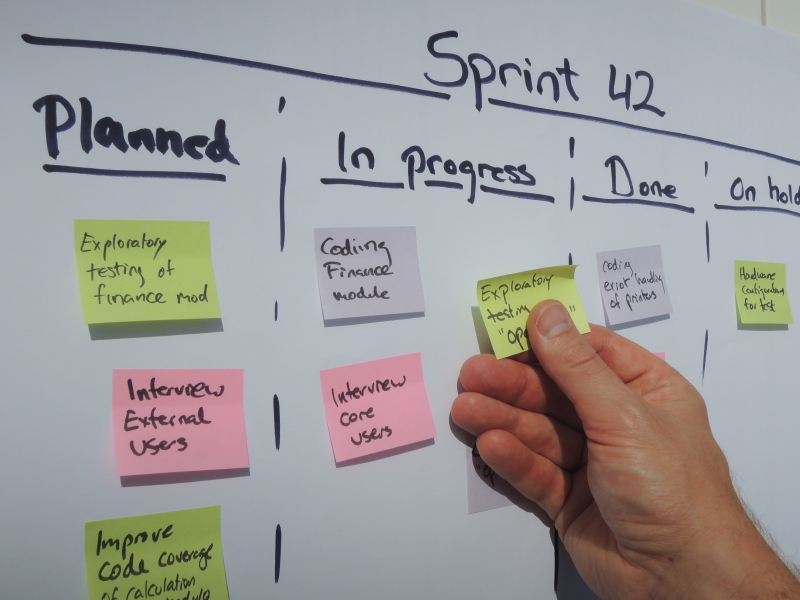First introduced in the 90s, the Agile methodology—also known as “Scrum” in the software development world—was created to produce not only faster but better software for teams and their customers. We at TCRDS are dedicated to using the Agile approach for all our clients.
Have you ever wondered what Agile software development is really all about? We wanted to write this blog to give a clear overview of what Agile means and why it is our preference at TCRDS. (You will also hear Agile methodology referred to as “Scrum,” as this term refers to Agile specifically in the world of software development.)
Agile principles were first introduced in the 90s. The goal was to create not only faster but better software. Everyone becomes more satisfied in the process, not only development teams but also customers.
But why is this approach superior, and why has Forbes founder Steve Denning gone so far as to say that the creators of Scrum should receive a Nobel Prize for management? Let’s take look.
The Agile Manifesto: An Overview
The Agile Manifesto encompasses a set of principles in which the highest priority in development is customer satisfaction. One of the ways this is achieved is through the early and continuous delivery of valuable software. Through the Manifesto, changes are handled at all points, even late in the development process.
Clients work closely with their developers throughout every stage of the project. Team members are both motivated and supported via a positive environment. Additionally, time is set aside at regular intervals so that the team can reflect on the overall level of effectiveness. This approach is client focused, flexible, and results oriented.
A More Flexible Way to Manage Projects
In today’s business environment, flexibility is essential and becoming more and more expected. Business climates have become fast paced, complicated, and prone to change at any moment. With large or complex projects, it’s often impossible to create a contract that premeditates every challenge ahead. Furthermore, staying too rigid and adhering too strictly to the contract may create negative consequences in the end. For this reason, it’s important for development teams to anticipate, respond to, and welcome change.
Through the Agile methodology, developers constantly adapt by reviewing and revising plans. It supports clients first and foreMOST®, collecting client feedback as much as possible and accommodating as necessary. This focus on communication is also seen in Scrum’s usage of smaller teams, which allows a much more concentrated flow of interaction and therefore faster solutions.
Individuals and Interactions Over Processes and Tools
Agile has a focus on people. Individuals are brought together in teams, emphasizing group communication over strict processes or tools. Acceptance and friendship are factored within the methodology to create a positive work environment. Of course, tools can be used but only when they support the team.
Working Software Over Comprehensive Documentation
Documentation is often an obstacle for development projects. It may waste time or cause developers to overthink the project. Agile instead concentrates on writing tests for the system and only creates documents when they truly add value for developers or their clients.
Collaborating with Clients Over Contract Negotiation
The Agile approach stresses interactive work sessions referred to as “sprints.” The reason that Agile methodology works incrementally is that it recognizes the fact that software can be unpredictable and that constant assessments are necessary. Once a sprint ends, the completed work is presented to the client and the team awaits feedback. Instead of reporting to a manager, the teams are tasked with reporting directly to the client.
Those looking to achieve the highest quality results on a consistent basis should opt for the Agile Manifesto. It offers the highest levels of flexibility and team-to-client communication as clients are an integral part of the process at all stages. Such transparency creates far less confusion, mystery, and room for error, ultimately reducing stress levels and increasing productivity. For a concise overview of the Agile Manifesto principles, visit https://agilemanifesto.org/principles.html.
Source: https://www.forbes.com/sites/stevedenning/2011/04/29/scrum-is-a-major-management-discovery/










